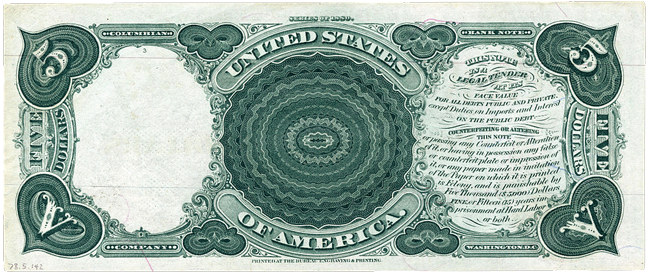HISTORY
Legal Tender Note
Move your cursor over the bill or tap it on your screen to see the reverse side.


- Nicknamed the "Woodchopper Bill," the bill's central portrait is a vignette featuring a man with an axe, his dog, wife, and baby. They represent a pioneer family making their way west.
- Unlike traditional notes that featured portraits of statesmen, generals, and politicians in the middle of the front or obverse of the note, the Legal Tender Notes featured vignettes of different topics with an off-center portrait, such as this one of President Andrew Jackson.
- The Legal Tender Act of 1862 authorized the issuance of the first U.S. Legal Tender Notes. These paper notes helped finance the Union effort and were not backed by gold or silver.
- These Legal Tender Notes were also called United States Notes or greenbacks because of the green ink on the back, or reverse, of the notes. From the 1907 series, this is the last of the large or "horse blanket" notes.



